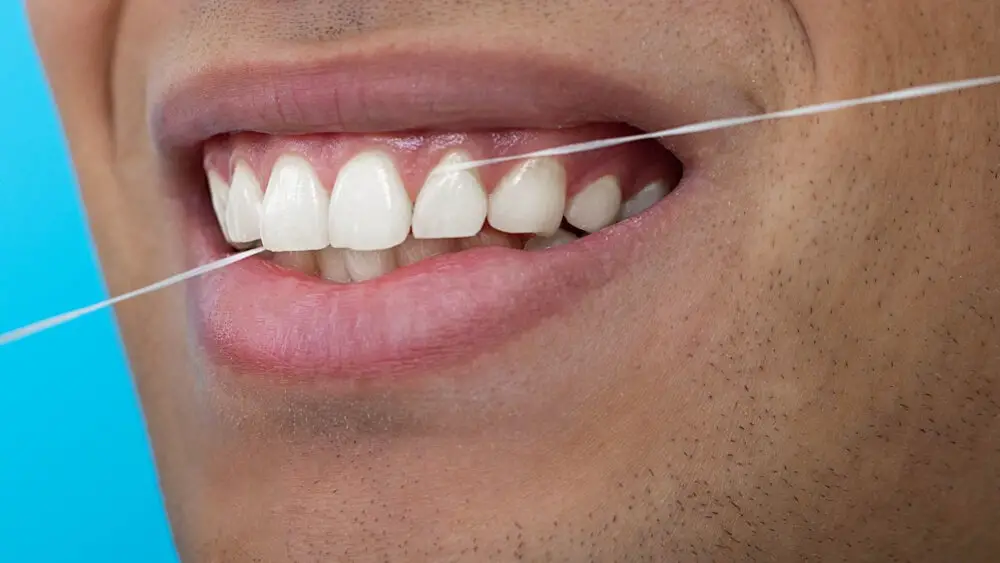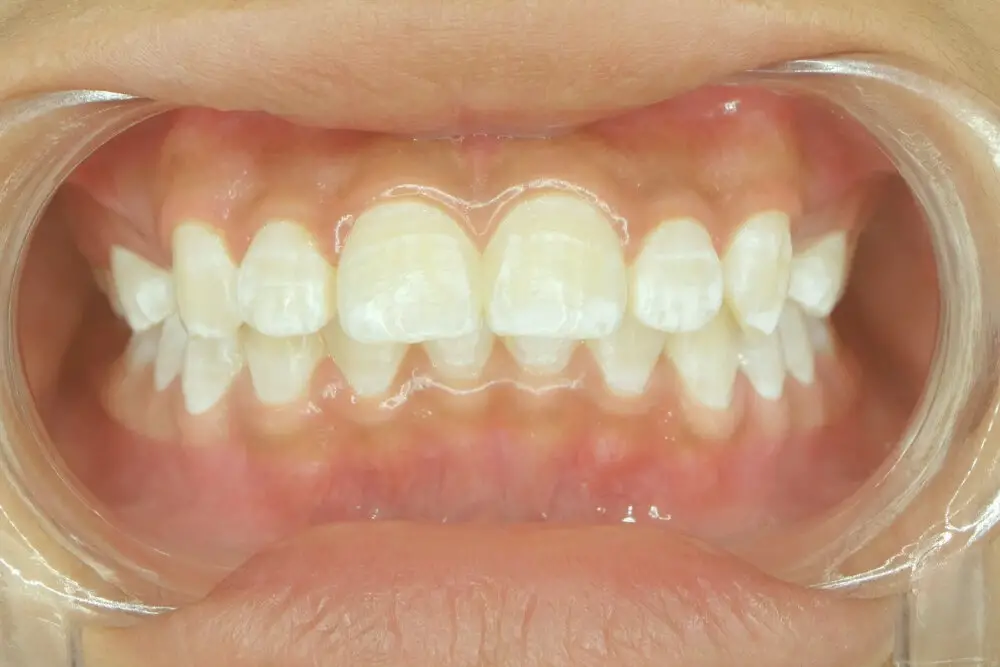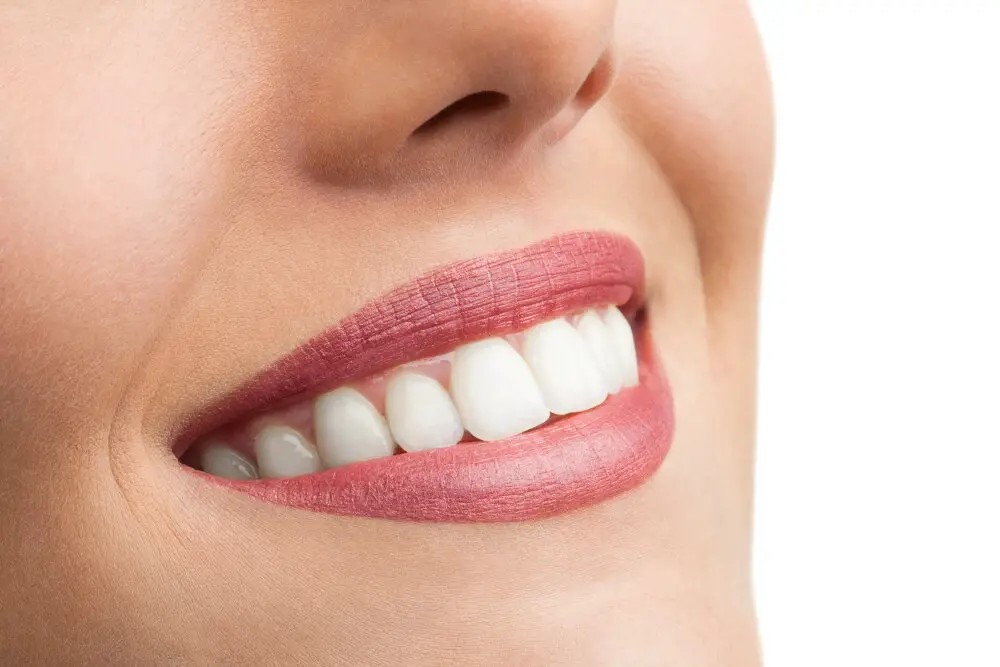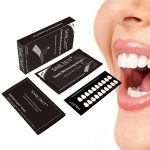Why Teeth Whitening Strips Cause Pain: Understanding the Science Behind the Sensitivity

A bright, white smile is a coveted feature that many people desire. In the pursuit of achieving pearly whites, teeth whitening strips have become an increasingly popular option. While these strips can be effective in removing stains and discoloration, they can also cause a significant amount of pain and sensitivity for some individuals. Understanding the science behind this sensitivity can help individuals make informed decisions about whether or not teeth whitening strips are the right choice for them. Teeth whitening strips work by using a peroxide-based gel to penetrate the enamel of the teeth and break down stains. While this process can be highly effective, it can also cause discomfort for many people. The peroxide gel can irritate the nerves in the teeth, leading to sensitivity and pain. In some cases, the pain can be so severe that individuals may need to discontinue use of the strips or seek professional dental care. Understanding why teeth whitening strips cause this pain can help individuals make informed decisions about how to achieve a brighter, whiter smile without causing unnecessary discomfort.
Teeth whitening strips are a popular method of achieving a brighter smile. They are thin, flexible strips that are coated with a peroxide-based gel that helps to remove surface stains and discoloration from teeth. The strips are applied to the teeth and left on for a specified amount of time, usually ranging from 30 minutes to an hour. While teeth whitening strips can be effective in brightening the teeth, they can also cause sensitivity and discomfort for some users. Understanding the science behind this sensitivity can help individuals make informed decisions about whether or not teeth whitening strips are right for them.
One of the most common side effects of teeth whitening strips is sensitivity, which can range from mild discomfort to sharp, shooting pain. This sensitivity occurs when the peroxide in the strips penetrates the enamel of the teeth and reaches the dentin layer, which is filled with tiny tubules that lead to the nerve endings. The peroxide then triggers a response in the nerve endings, resulting in the sensation of pain. Although sensitivity is a temporary side effect and typically fades within a few days, it can be quite uncomfortable and even debilitating for some individuals. Therefore, it is important to understand the science behind this phenomenon and take steps to minimize its occurrence.
What are teeth whitening strips?

Teeth whitening strips are a popular cosmetic product that promises to brighten your teeth and give you a confident smile. These strips are made of a thin, flexible plastic material that is coated with a layer of whitening gel. They are applied directly onto the teeth for a specific period, usually ranging from 30 minutes to an hour, and are then removed. The whitening gel in the strips contains hydrogen peroxide, which is the active ingredient that bleaches the teeth and removes stains. The peroxide breaks down the stains into smaller, less visible particles, leaving your teeth looking whiter and brighter. While teeth whitening strips can be an effective way to achieve a brighter smile, they can also cause pain and sensitivity if not used correctly. The whitening gel in the strips can penetrate the enamel and reach the sensitive dentin layer beneath, causing a temporary increase in sensitivity. This sensitivity can range from mild discomfort to sharp pain and can last for several days after the treatment. To avoid this pain, it is essential to follow the instructions carefully and not leave the strips on for longer than recommended. It is also advisable to use desensitizing toothpaste before and after the treatment and avoid consuming hot or cold food and drinks for a few hours after the treatment.
Teeth whitening strips are thin, flexible, and clear strips coated with a layer of hydrogen peroxide or carbamide peroxide, which are the active ingredients that bleach the teeth. These strips are designed to stick to the surface of the teeth and gradually dissolve, releasing the bleaching agent into the enamel. Teeth whitening strips are a popular and convenient at-home teeth whitening method that promises to brighten your smile in just a few weeks. However, they can cause sensitivity and discomfort, especially if used improperly or excessively. Understanding the science behind teeth whitening strips and their effects on the teeth can help you avoid pain and achieve a brighter, healthier smile.
Teeth whitening strips work by using a combination of hydrogen peroxide or carbamide peroxide to penetrate the enamel of the teeth and break down the molecules that cause staining. This process leads to a chemical reaction that removes the discoloration from the surface of the teeth. However, this reaction can also cause sensitivity in some people. The peroxide can penetrate the enamel and irritate the nerves inside the tooth, causing discomfort or pain. It’s important to follow the instructions carefully and use the strips only as directed to minimize the risk of sensitivity. Additionally, some people may be more prone to sensitivity due to existing dental issues, so it’s important to consult with a dentist before using any teeth whitening products.
When it comes to teeth whitening strips, there are a variety of popular brands on the market. Some of the most well-known include Crest, Colgate, and Aquafresh. These brands all offer different types of whitening strips, ranging from gentle options for those with sensitive teeth to more intensive products for those looking for dramatic results. While these strips can be effective at removing stains and brightening teeth, they can also cause pain and sensitivity for some users. Understanding the science behind this sensitivity can help individuals choose the right type of strip for their needs and minimize any discomfort associated with their use.
Sensitivity and teeth whitening

Teeth whitening is a popular cosmetic procedure that can help you achieve a brighter, more attractive smile. However, many people experience sensitivity and discomfort after using whitening strips. This sensitivity can be caused by a variety of factors, including the concentration of the whitening agent, the duration of the treatment, and the condition of the teeth and gums. One of the main reasons why teeth whitening strips cause sensitivity is due to the presence of hydrogen peroxide in the whitening gel. This powerful bleaching agent can penetrate the enamel of the teeth and reach the sensitive dentin layer underneath. When the dentin is exposed to the hydrogen peroxide, it can cause a temporary inflammation and hypersensitivity. This sensitivity can be particularly noticeable when you eat or drink hot or cold foods and beverages, or when you brush your teeth. If you experience sensitivity after using whitening strips, it is important to stop the treatment and consult with your dentist to determine the best course of action. To minimize the risk of sensitivity and discomfort when using teeth whitening strips, it is important to follow the manufacturer’s instructions carefully. This may include using the strips for a shorter duration or using a lower concentration of the whitening agent. Additionally, you can try using a desensitizing toothpaste or mouthwash to help reduce sensitivity and protect your teeth and gums. If you experience persistent or severe sensitivity, it may be necessary to seek professional dental treatment to address any underlying issues and ensure the health and beauty of your smile.
Tooth sensitivity is a common dental problem that can cause discomfort or pain when eating or drinking hot, cold, sweet, or acidic substances. It occurs when the protective layer of enamel on the teeth wears away, exposing the underlying dentin and nerve endings. Many factors can contribute to tooth sensitivity, including gum disease, tooth decay, teeth grinding, and using abrasive toothpaste or mouthwash. In the case of teeth whitening strips, the active ingredient, hydrogen peroxide, can penetrate the enamel and reach the dentin, causing temporary sensitivity. Understanding the science behind tooth sensitivity is essential for proper dental care and treatment. Regular dental check-ups, proper oral hygiene, and avoiding abrasive substances can help prevent tooth sensitivity and maintain healthy teeth and gums.
Teeth whitening strips are a popular and convenient way to brighten teeth, but they can also cause sensitivity and pain. The active ingredient in most whitening strips is hydrogen peroxide, which works by breaking down stains on the teeth. However, hydrogen peroxide can also penetrate through the enamel and into the dentin layer, causing irritation and inflammation of the nerves in the teeth. This can result in sensitivity to hot and cold temperatures and even pain. Additionally, some people may be more prone to sensitivity due to genetics or pre-existing dental conditions, making them more susceptible to the effects of whitening strips. Therefore, it is important to use these products as directed and to consult with a dentist if sensitivity persists.
Tooth sensitivity is a common side effect of teeth whitening, especially when using whitening strips. The reason for this sensitivity is due to the active ingredient in the strips, which is usually hydrogen peroxide or carbamide peroxide. These ingredients penetrate the enamel and break down the stains, but they also cause the dentin layer to become more exposed, leading to sensitivity. The degree of sensitivity can vary from person to person, with some experiencing only mild discomfort, while others may experience more severe pain. It is important to follow the directions carefully and to avoid using whitening strips too frequently to minimize the risk of sensitivity. Applying desensitizing agents or using whitening strips with lower concentrations of peroxide may also help alleviate sensitivity.
Science behind the sensitivity

The science behind tooth sensitivity involves the exposure of the dentin layer of the tooth. Dentin is a porous layer under the enamel that contains microscopic tubules that lead to the nerve endings in the pulp. When the enamel is worn down or the gum line recedes, the dentin is exposed, causing sensitivity. Tooth whitening strips contain hydrogen peroxide or carbamide peroxide, which penetrate the enamel and work to remove stains. However, these substances can also penetrate the dentin layer and cause irritation to the nerve endings, leading to sensitivity and pain. This pain can be temporary or last for a longer period, depending on the severity of the exposure and the individual’s sensitivity. Tooth sensitivity can also be caused by the method of application of the whitening strips. If the strips are applied too tightly or for too long, they can cause irritation to the gums, which can also lead to pain and sensitivity. Additionally, if the strips are not properly aligned with the teeth, they can cause uneven exposure of the whitening substance, which can lead to uneven whitening and sensitivity in some areas of the teeth. Understanding the science behind tooth sensitivity and the causes of pain can help individuals make informed decisions about their teeth whitening options and take preventative measures to avoid sensitivity and pain.
Understanding the anatomy of a tooth is essential in comprehending the underlying cause of tooth sensitivity. The visible part of a tooth is known as the crown, which is covered by enamel, the hardest substance in the human body. Beneath the enamel is the dentin, which contains microscopic tubules that connect to the nerve endings in the pulp. The pulp is the innermost part of the tooth and contains blood vessels, nerves, and connective tissue. When the enamel is worn down or the dentin is exposed, it can lead to tooth sensitivity. This is because the nerve endings in the pulp become irritated by external stimuli, such as hot or cold temperatures or acidic substances. Therefore, it is crucial to maintain good oral hygiene to prevent enamel erosion and protect the dentin and pulp from damage.
Teeth whitening strips are a popular method of achieving a brighter smile, but their use can sometimes lead to pain and sensitivity. The strips contain a peroxide-based gel that penetrates the enamel of the teeth and oxidizes the stains, breaking them down into smaller particles that are less visible. The peroxide penetrates the enamel by diffusing through the small pores and cracks in the surface of the teeth. This process can cause temporary dehydration of the teeth, leading to the discomfort and sensitivity that some users experience. It is important to use teeth whitening strips as directed and to avoid leaving them on for too long to reduce the risk of sensitivity.
Teeth whitening strips have become a popular way to obtain a brighter smile, but many people experience pain or sensitivity during the process. This is due to the chemical reactions that occur within the strips themselves. The active ingredient in most whitening strips is hydrogen peroxide, which breaks down into water and oxygen when applied to the teeth. This reaction creates bubbles and pressure within the tooth, causing pain and sensitivity. Additionally, the peroxide can penetrate the enamel and reach the dentin layer of the tooth, where it can irritate the nerves and cause discomfort. Despite these side effects, teeth whitening strips remain a popular option for those seeking a brighter smile.
Minimizing sensitivity while using teeth whitening strips

Teeth whitening strips are a popular way to achieve a brighter, more beautiful smile. However, many people experience sensitivity and discomfort when using these strips. Fortunately, there are several strategies you can use to minimize sensitivity and still achieve great results. One of the most important things you can do is to choose a high-quality whitening strip that is designed to be gentle on your teeth. Look for products that are specifically formulated to reduce sensitivity, and avoid using strips that contain harsh chemicals that can irritate your teeth and gums. Another key strategy for minimizing sensitivity while using teeth whitening strips is to follow the instructions carefully. It is important to use the strips exactly as directed, and to avoid leaving them on for longer than recommended. Additionally, it is important to use the strips consistently over a period of several weeks, rather than trying to whiten your teeth all at once. By taking these steps, you can minimize sensitivity and still achieve great results with teeth whitening strips.
To reduce sensitivity before and during teeth whitening, there are several tips that can be followed. Firstly, it is important to avoid consuming any acidic or sugary foods and drinks, as they can cause sensitivity. Secondly, using a desensitizing toothpaste or gel prior to the whitening treatment can help to reduce sensitivity. Thirdly, it is recommended to use a lower concentration of the whitening agent and to reduce the amount of time the strips are left on the teeth. Another tip is to ensure that the strips are applied correctly, as improper application can lead to sensitivity. Finally, it is important to consult with a dentist before starting any teeth whitening treatment to ensure that it is safe and appropriate for the individual’s specific situation. By following these tips, it is possible to reduce sensitivity and achieve a brighter, more confident smile.
While teeth whitening strips are a popular and convenient way to brighten one’s smile, they can also cause pain and sensitivity. Fortunately, there are alternatives to teeth whitening strips that can achieve similar results without the discomfort. One option is to use natural remedies such as baking soda, activated charcoal, or coconut oil pulling. These methods are gentle on the teeth and can help remove surface stains. Another option is to visit a dentist for professional teeth whitening treatment, which uses a higher concentration of whitening agents than over-the-counter products. While it may be more expensive, professional treatment is safer and provides longer-lasting results. Ultimately, it’s important to weigh the potential risks and benefits of any teeth whitening method and consult with a dental professional before starting any treatment.
Teeth whitening strips are an increasingly popular option to brighten up one’s smile. However, many users experience sensitivity and discomfort during or after the process. The reason behind this lies in the composition of these strips. Whitening strips contain a bleaching agent, typically hydrogen peroxide or carbamide peroxide, which penetrates the enamel and breaks down the stains. This process can cause the dentin, the underlying layer of the tooth, to become exposed, leading to sensitivity. Additionally, the prolonged exposure to the bleaching agent can irritate the gums and cause them to become inflamed, further increasing the discomfort. It’s important to follow the instructions carefully and consult with a dentist if the sensitivity persists.
Being aware of the potential side effects of any product or treatment is crucial in maintaining overall health and wellbeing. In the case of teeth whitening strips, understanding the science behind the sensitivity and pain they can cause is essential. It is important to recognize that the active ingredient in these strips, hydrogen peroxide, can penetrate the enamel and reach the dentin layer of the tooth, causing sensitivity and discomfort. By being aware of this potential side effect, individuals can make informed decisions about whether or not to use teeth whitening strips and take necessary precautions, such as using them less frequently or using a lower concentration of hydrogen peroxide. Ultimately, being informed about potential side effects can lead to better choices and a healthier outcome.
In conclusion, teeth whitening strips can be an effective way to brighten your smile, but it’s essential to understand the science behind the sensitivity they can cause. It’s essential to follow the instructions carefully and avoid overuse, as this can lead to discomfort and potential damage to your teeth. Additionally, it’s crucial to consider the underlying cause of your tooth discoloration, such as poor oral hygiene or certain medications, and address it accordingly. Overall, teeth whitening strips can be a useful tool in achieving a brighter smile, but it’s essential to use them responsibly and with caution to avoid any unnecessary pain or damage.
Conclusion

In conclusion, teeth whitening strips can cause pain due to the chemical reactions that occur during the whitening process. The bleaching agent in these strips penetrates the enamel layer of teeth, which can cause temporary sensitivity and discomfort. It is important for individuals to understand the science behind the sensitivity and to follow recommended usage instructions to prevent any long-term damage to their teeth. While teeth whitening strips can provide a brighter smile, it is crucial to prioritize dental health and to consult with a dentist before using any at-home teeth whitening products.







